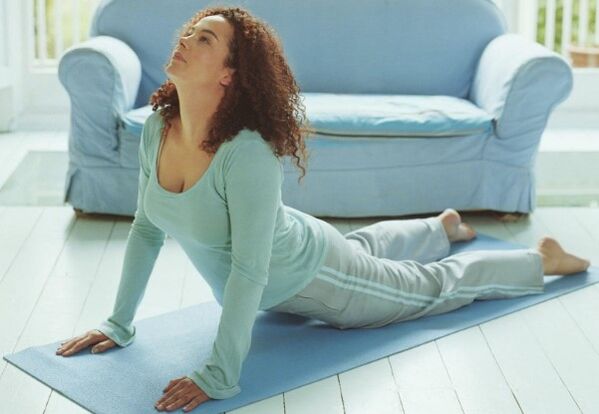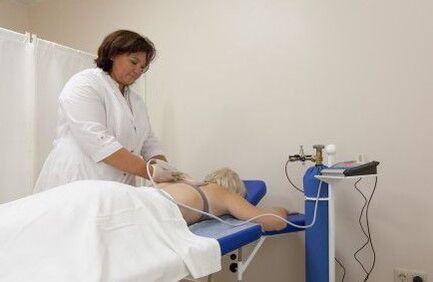Osteochondrosis of the cervical spine is a fairly common disease that changes dystrophic changes in cartilage tissue, discs between vertebrae and bone foundations. This pathology develops for many people who have been 30 years old. Symptoms of cervical osteochondrosis are different, making it quite difficult to diagnose the disease and choose the right treatment.
Factors provoking the onset of the disease
Cervical osteochondrosis can develop through the following factors:
- excessive weight;
- sedentary work, inactivity;
- previous spinal injuries;
- Mental disorders, nervous excessive stress, stress;
- Poor physical training;
- spinal curvature, scoliosis, improper posture;
- Incorrect body position that has become a habit;
- tension in the neck, back during surgery;
- predisposition to genetic level;
- unusual physical stress for the body, increased activity;
- Inal Meals.
The back neck area increases the load that g. Cervical muscles try to balance the influence of the above sources. It provokes the onset of muscle spasm, which causes blood transportation throughout the body. As a result, anatomical damage is observed.
Degree of osteochondrosis
As the cervical osteochondrosis develops, the discs between the vertebrae, which change the structure of discs, vertebrae, articular tissue are reduced. First degree disease occurs almost asymptomatic as cartilage changes only begin. In this case, the person complains of appearance:
- headache;
- discomfort in the neck, hands, shoulders;
- minor restrictions on the motor activity of the neck;
- short -term decrease in visual function;
- Reducing sensitivity in the collar area.
The second stage is sometimes accompanied by a small vertebrae hernia, as well as narrowing of cracks between the vertebrae. Nerve receptor damage causes a point of pain during movement. For second degree disease, the patient notes the appearance:
- Pain syndrome in the neck, crunching in head movements;
- Loss of skin sensitivity in the hands and shoulders;
- Reduction of visual function;
- Ringing in the ears;

- numbness in the face and neck;
- hand weaknesses;
- shooting pains, giving it to the shoulder blade;
- Sleep functions disorders.
It is very difficult to treat a third degree osteochondrosis of the cervical region. Currently, the hernia develops, the spinal column is deformed, the situation is noticeable, the dislocation of the ridge elements. This stage of the disease is accompanied by:
- bright neck pain, myocardial, collar area;
- Lack of skin sensitivity in the head, hands and shoulders;
- hand paralysis;
- lack of reflexes of tendons;
- Hernia formation in the cervical vertebrae.
There is an exacerbation of signs during the fourth (final) stage.
Symptoms
Signs of cervical disease are significantly different from the symptoms of osteochondrosis in the other area of the vertebrae column. Because the cervical vertebrae are close, the nerve roots and spinal cord are compressed.This leads to the emergence of the following signs:
- The pain syndrome is localized in the neck, cracks, shoulders, hands and feet. Connecting to the nerve receptors, an awkward sensations in the shoulder zone, at the back of the head, hands began to rebuild. The gap is disrupted in the cervical muscle.
- The weakness of the upper extremities has been observed to be associated with a damage to root functionality, which contributes to the inclusion of motor nerves that restore muscle tissue in muscle tissue.
- The upper limbs are restored due to decreased sensitivity in them, the root of the roots containing sensitive nerve endings.
- Turning your head, painful sensations appear, and you can also hear the crisis. This is explained by the small cervical region joint lesions and reduces the level of intervertebral discs.
- The patient complains of lack of strength, onset of fatigue, dizziness, and coordination disorders. Due to the displacement of the spinal elements, the vertebral artery is compressed. As a result, the blood flow is deteriorating, leading to the weakening of the blood supply on the occipital section and the brain.
- Problems with visual problems and loss of sensitivity in speech were observed.
Symptoms of cervical osteochondrosis of women are no different from male signs. Women who were 45 years old and older diagnosed with such a disease also pay attention to tingling in the upper limbs.
What is the risk of osteochondrosis of the cervical region
The disease can damage the whole body. The neck contains a number of arteries, nerve receptors, blood vessels through which the brain is supplied. If even a small disease occurs, they are compressed.This provokes problems with blood supply to the brain.As a result, the formation of migraine, heart rhythm disorders, respiratory and visual problems also disrupts coordination and attention.
Depending on the osteochondrosis of the neck, the formation of such diseases is possible:
- pathology in the brain;
- Arterial vessel syndrome in the spine;
- spinal stroke.
The most serious complication is the death of a patient, which can occur with compression of the spinal canal. Symptoms and treatment of cervical osteochondrosis are due to the stage of the disease.
Therapeutic actions of cervical osteochondrosis
The cervical spine osteochondrosis therapy was found, regardless of the patient's sexual gender. Treatment takes place in several stages:
- Remove painful manifestations.
- Removal of swelling.
- Blood turnover to normal.
- Muscle capture on the back, abdominal press, chest.
- Improves nutrition quality and tissue spine regeneration.
If even signs of insignificant disease have been found, you should consult a specialist. Using such pathology, an integrated approach required by a surgeon, neuropathologist, physiotherapist and a hand therapist.
For therapeutic purposes, depending on cervical osteochondrosis, medication, physiotherapy treatment, collar massage and physiotherapy exercises because it is quite effective in this condition.
Medicines
When detecting cervical osteochondrosis, they are given:
- Preparing for muscle spasms for removal;
- Vitamin tools to improve metabolic processes in the central nervous system;
- NSAIDs Medicines to reduce pain, eliminate inflammatory process and swelling;
- Joint joints, which contribute to cartilage restoration, eliminate disc disorders between vertebrae.
- Medicines that are favorable to improve the nutrition of the affected nerve tissue by regulating the flow of blood into the brain.
First aid for exacerbation of cervical osteochondrosis
Sometimes, if the pain syndrome becomes unbearable, but it is impossible to see a doctor, experts advise you to take analgesics. You can seek the help of a pepper patch to relieve pain, but this tool only facilitates a short time.The patch will help warm up the affected area and relieve pain for a while.The use of herbal infusions is recommended for 3-4 days to get rid of swelling.
However, it is worth considering that such methods will not work to recover from cervical osteochondrosis. These methods help to cope with the signs of the disease only for a short time. You will need to contact a specialist to prescribe full therapy.
Physiotherapy procedures
As part of the complex treatment to improve the effect, use:
- Electrophoresis - The ions of the analgesic drug penetrate the affected area due to the effect of electric current. Novocaine or lidocaine is usually used during the procedure.
- Laser therapy - it has anti -inflammatory effect, improves blood circulation through light influence.

- Magnetic therapy - Helps to get rid of edema in tissues, has analgesic effect.
- Ultrasound - helps to improve metabolism, anesthesia, removes the inflammatory process at the affected area.
Medical physical education
Also, using cervical osteochondrosis, therapeutic exercises will help improve well. It is worth noting that exercise should not be accompanied by pain or discomfort. Exercise complex:
- We lie down on the stomach and rest on the floor. The back should be smooth and the head and body raised. We stay in this position for about 2 minutes, then return to the starting position. We carry 2-3 reps.
- We sink on the floor, lie down on the back, from our hands along the body. First we turn our heads to the right, then to the right, trying to touch the floor with the ear. We do the exercise 6-7 times in each direction.
- We sit on the floor. We breathe and tilt our head forward, trying to touch the chest. As we exhale, we throw our head back. The exercise must be repeated 10 to 15 times.
- We sit on the floor, press the hands on the forehead and at the same time lower the head. The exercise should be done for about 30 seconds, repeatedly 2-3 times.
- Smooth, slowly we rotate our head to avoid dizziness. In the event that the head began to dizzy, the exercise should be stopped. It is necessary to turn 10 times left to the right.
Home treatment
Such therapy can only be used as part of a detailed treatment.You can seek help from folk medicines, physiotherapy and massage at home.
With cervical osteochondrosis, you can use the following recipes:
- Place the horseradish leaf on the sludge and attach it with a bandage or cloth. The sheet should be filled with hot water and then cool to room temperature. Such a bandage is placed before bed and left until morning.
- Explain potatoes and mix with honey in equal proportions. Apply to set a compress every 7 days.
- To weaken the pain, warming will help with mustard, bag of sand, pepper patch, etc.

It is recommended to seek medical attention before using all funds.
Massage
The treated massage can be done at home. You have to start a huge healthy body area, gradually switching to the affected area. The massage complex should be selected based on the individual characteristics of the patient, the degree of negligence of the disease. The massage should be done by the patient by placing it horizontally on the floor. You have to put your palms on your forehead and my chin protrudes towards your chest. The neck muscles should be softened.
Massage is done as follows:
- First we massage the collar area with smooth movements.
- Then go compressed. To do this, put your hands around your neck and move along your spine. This technique can also be used to massage in the shoulder direction.
- To warm the neck muscles, we rub it. This will help the body relax, improve blood circulation. You need to move from the skull along the spine using circular movements.
- The last movement is the vibration that is done due to chewing and concussion.
Preventive actions
To prevent the development of cervical osteochondrosis, it is recommended:
- Sports (ideal choice is to visit the pool).
- Enter products enriched with calcium and magnesium in the diet.
- Wash several times during the day, especially when busy with sitting work.
- According to the requirements to replace the pillow (buy low) and mattress (you need quite strongly). Follow your neck in your dream: the neck should bend at least 15 degrees.
- Put a hot shower for at least 10 minutes all day.
- People who do not comply with sports recommend periodic attendance at the Yoga Division.
- Do not do the exercise equipment as it can worsen the well.



























































































